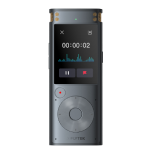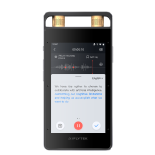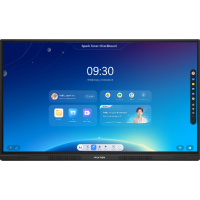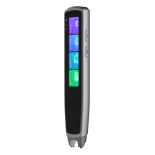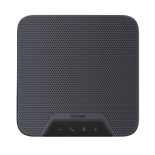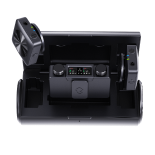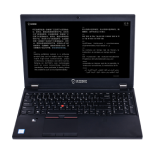January 16, 2024
The Shengsi Islands in Zhejiang: Advancing the Construction of Smart Classrooms to Offer High-quality Education to “Children of the Islands”
Prioritizing shared prosperity with a commitment to putting education first, Shengsi County in Zhejiang Province is at the forefront of embracing the digital transformation sweeping southeastern China. Guided by the tailored strategy of “One Program for Each County” of the Zhejiang Provincial Education Department supporting high-quality education development in Shengsi, the county education bureau is proactively integrating artificial intelligence and other information technologies to enhance the establishment of smart classrooms. This commitment ensures that even “children living on islands” have access to high-quality and well-rounded education

The county is committed to advancing precision teaching and driving reforms in classroom instruction. In 2022, Shengsi partnered with iFLYTEK Smart Education to catalyze the digital evolution of island education through the integration of AI. Presently, Zhixue Network and smart classroom teaching systems are available across 63 classes spanning three grades at Shengsi Middle School, Haixing Middle School, and Shengsi County Junior High School. They benefit over 700 teachers and students, establishing a robust foundation for achieving high-quality, balanced, and comprehensive educational development in the county.
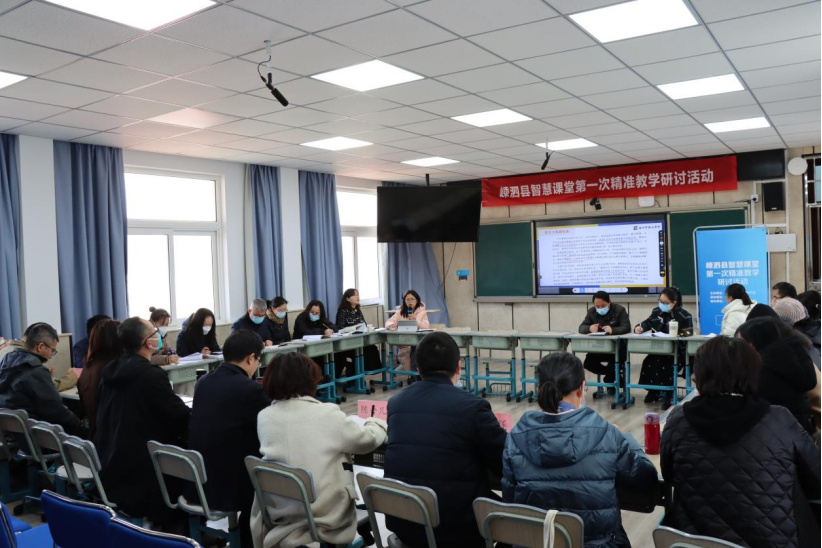
Schools have devised annual implementation plans for Shengsi County smart classroom development to expedite technology integration in education. They have conducted subject-based research on the pedagogical applications of smart classrooms. A teaching and research paradigm incorporating smart classroom elements has been crafted to facilitate the transformation of learning and teaching methodologies. Simultaneously, through multi-level and systematic high-quality research and training initiatives guided by experts and peer collaboration, teachers are encouraged to engage in exploratory research, enhancing their digital literacy and precision teaching skills based on information.
1. Establishing smart classrooms and pioneering innovative teaching methods
“With the introduction of smart classrooms, traditional teaching spaces have seamlessly transitioned into the information age. Leveraging collection and analysis of dynamic learning data, we can now achieve data-driven teaching decisions, instantaneous evaluation feedback, three-dimensional communication and interaction, and intelligent resource recommendations, cultivating a learning environment that fosters collaborative communication and sense-making”, noted Xu Bo, Vice Principal of Shengsi Middle School.
A glance through the windows at Shengsi Middle School reveals teachers engaging with students in smart classrooms. “Amidst the backdrop of the new curriculum reform and the digital evolution in education, smart classrooms have revolutionized lesson preparation and teaching, introducing a new level of convenience and intelligence,” shared Jin Lingling, an English teacher at Shengsi Middle School. Leveraging information tools, classroom teaching has become more diversified. Micro-lessons are recorded and shared with students, and resources can be easily distributed through screenshots, fostering a closer interaction between teaching and learning. This facilitates a conducive learning approach for students and nurtures their awareness of independent learning.
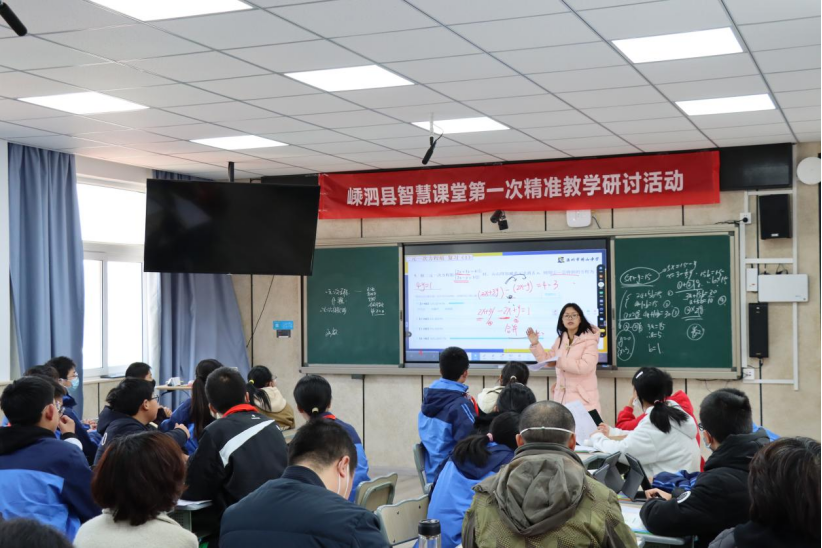
With smart classrooms serving as technical support, Hu Jiaxin, a teacher at the school, utilizes a wealth of teaching resources, including pictures, videos, and audio, to make knowledge explanations more intuitive. Through tools like whole-class response and quick response, students actively engage in various classroom interactions, completing diverse learning tasks within the context of the lesson. This approach significantly enhances the efficiency of classroom teaching. “During class, teachers employ a large screen to present slides and videos, providing a more engaging and participatory experience. We can also respond using student terminals, making the class very interesting. After class, we can take photos and upload our homework for teachers to correct and provide feedback”, shared a student from Shengsi County Junior High School.
2. Enhancing precise teaching to elevate the quality and efficiency of island education
Smart classrooms allow for the comprehensive recording of students’ learning processes, intelligent analysis of their learning conditions, and digitizing teaching resources. This, in turn, enables intelligent teaching analysis, offering teachers the convenience to understand students’ learning progress better and conduct teaching activities in a scientifically informed manner.
Shen Shuguang, Principal of Haixing Middle School, highlighted that the school teachers consistently employ a “three-test” teaching approach, focusing on “happy learning,” “capable learning,” and “conscious learning.” This teaching approach is seamlessly integrated with a smart classroom, precisely identifying classroom dynamics through big data for enhanced efficiency. “Before test” provides positioning to facilitate tailored unrolling of classroom teaching adapted promptly; “during the class test” supports completeness of knowledge sharing and explanation; and “after test” offers repositioning, which achieves a genuine understanding of students’ comprehension.
Furthermore, utilizing learning data diagnosis across the entire teaching scenario enhances homework design's efficacy, helping teachers and students reduce workload and increase efficiency. Feng Huanhuan, a teacher from Shengsi Middle School, arrived on the islands in September last year. When discussing the transformative effects of the school’s adoption of smart classrooms, she mentioned that she can now assign more targeted and tiered assignments by analyzing learning conditions. “Since the introduction of smart classrooms, I’ve noticed a significant improvement in the precision of homework assignments. For instance, I struggle with oral English. The assigned exercises often focus on situational dialogues. On the other hand, my desk-mate’s composition skills need improvement. There will be more writing exercises.” This sentiment is widely shared among most students at Shengsi Middle School.
3. Establishing locally tailored resources to improve the quality of island education
The development of regional education is significantly advanced through the construction of localized resources. Shengsi County is actively cultivating exemplary subjects and subject foundations, elevating the standard of school-based teaching and research, and reinforcing the development of localized resources.
Building upon the foundation of the smart classroom platform, the working approach involves two key components. Firstly, seamless connections with other resource platforms are established to integrate question banks, and teaching aids teachers use in alignment with Zhejiang middle and high school curricula. Secondly, each school implements a school-specific resource library construction plan, coordinating teachers to create and curate high-quality materials. These materials, including teaching designs, presentation slides, test questions, and micro-lesson videos, are systematically uploaded to the school-based resource library, organized by chapters, to enrich the smart classroom’s local resource repository. As of December 20, 2023, Shengsi County Cloud Resource Library has amassed 678,362 items of subject resources, 3,506,632 items of test paper resources, and 36,733,205 items of test question resources. Simultaneously, school-based subject resources number 20,714, with 229,440 questions in the question bank, collectively providing a wealth of high-quality resources to support Shengsi’s endeavors in precision teaching.
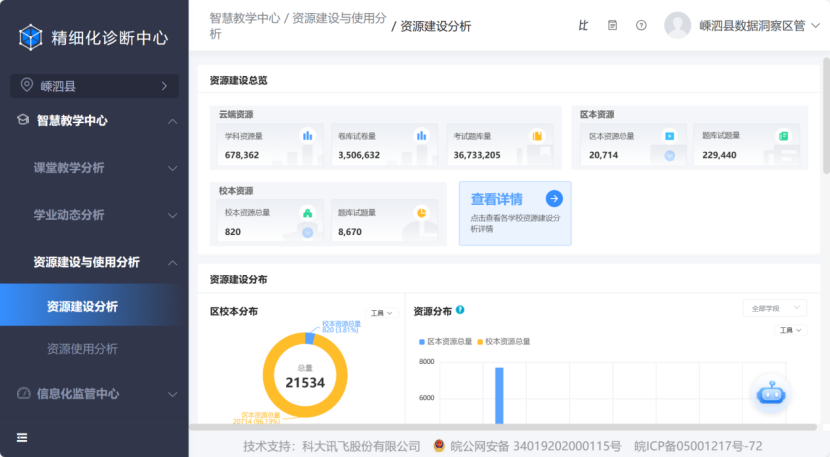
Embrace the tide and empower with intelligence. Building on the success of smart classroom construction, Shengsi County is committed to furthering classroom teaching reform, fostering the seamless integration of information technology with education, and advancing the high-quality and equitable development of local education to ensure that “children living on islands” have access to and benefit from high-quality education.
*Data in the article is sourced from platform statistics.
Editor: Cheche
Executive Editor: Zhoumo
More News
-

 Industry First: Bluey and Other Classic English Animations Launch Exclusively on iFLYTEK AI Learning Machine
Industry First: Bluey and Other Classic English Animations Launch Exclusively on iFLYTEK AI Learning MachineJanuary 14, 2026
-

 iFLYTEK Showcases at the 2025 China International Travel Mart
iFLYTEK Showcases at the 2025 China International Travel MartJanuary 08, 2026
-

 2025 World University Presidents Forum Hosts "AI and Scientific Research Paradigms Shift"
2025 World University Presidents Forum Hosts "AI and Scientific Research Paradigms Shift"November 25, 2025
-

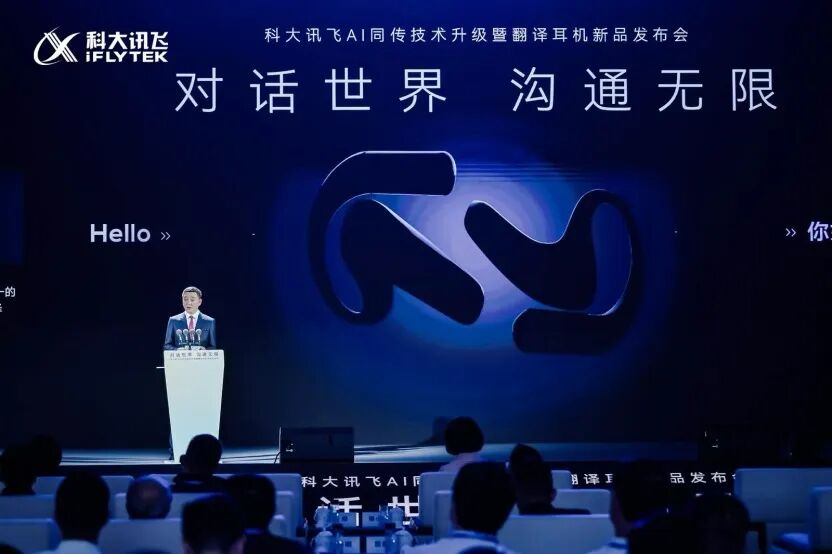 iFLYTEK Upgrades Simultaneous Interpretation Model and Launches iFLYTRANS Headsets in Shanghai and Dubai
iFLYTEK Upgrades Simultaneous Interpretation Model and Launches iFLYTRANS Headsets in Shanghai and DubaiOctober 31, 2025
-

 Spotlight on DMEXCO 2025: Join iFLYTEK AI Marketing to Shape the AI-Driven Future of Digital Marketing
Spotlight on DMEXCO 2025: Join iFLYTEK AI Marketing to Shape the AI-Driven Future of Digital MarketingOctober 22, 2025








